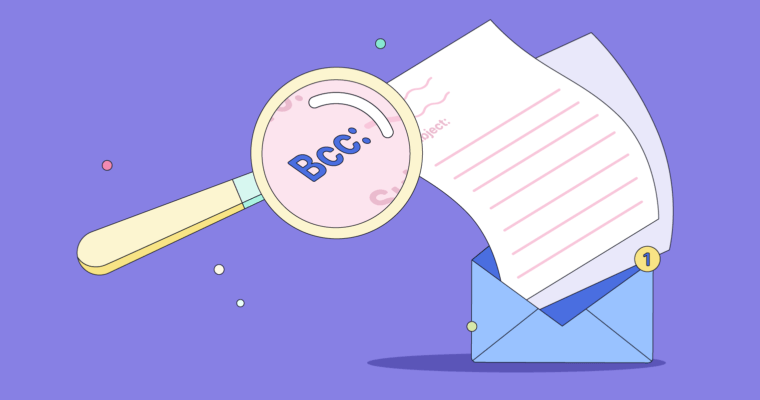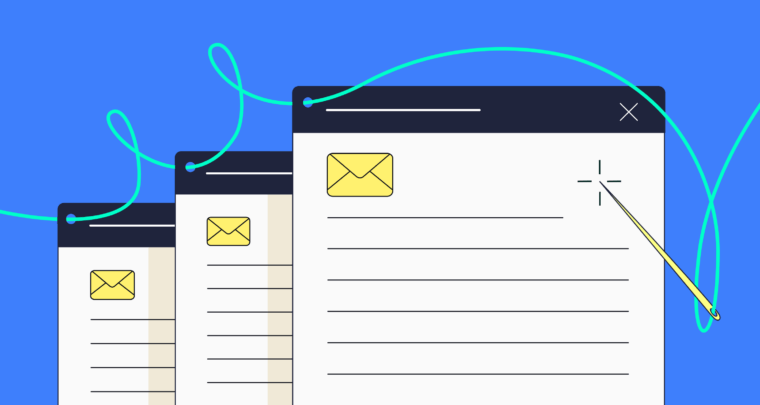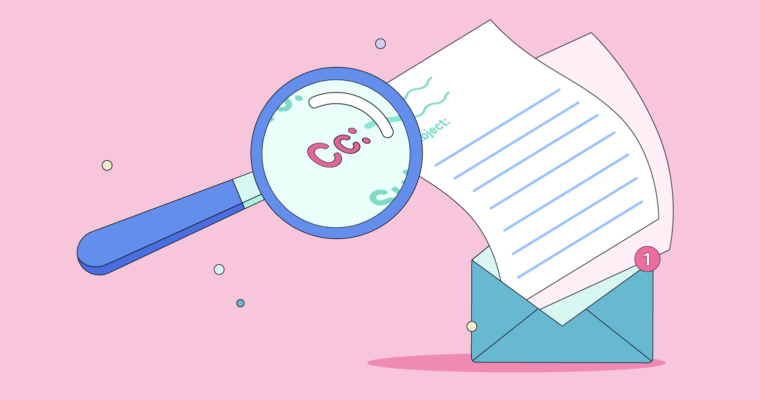
In the professional world, conversations frequently involve follow-up emails. You might need to revisit a meeting’s topic, remind a colleague about a project you’re working on, or reach out to a prospective client by engaging with them multiple times.
What is a follow-up email?
A follow-up email is an email sent to keep the recipient engaged. You can write a follow-up email in almost any scenario where you need to bring a conversation back to the recipient’s attention. Here are a few examples:
- Following up about a job after an interview
- Following up about an application you submitted
- Following up about a request or question you asked
- Checking in on a project’s status
In most cases, a follow-up email should be direct, concise, and use a professional tone.
Follow-up emails can also be sent to reengage a person after a phone call, message, or in-person conversation. It’s not uncommon to send a follow-up email after a spoken conversation to document its topics in writing.
What is the purpose of a follow-up email?
Sometimes, emails slip through the cracks and go unanswered. In other cases, you need to continue a verbal conversation over email. In both scenarios, a well-written, confident follow-up email keeps the subject top of mind.
Follow-up emails serve a variety of purposes, including these:
- Increasing conversion rates
- Engaging with prospects
- Scheduling calls and meetings
- Managing projects
Follow-up email format
Subject line
An email’s subject line is the brief line of text a recipient sees in their inbox before they open the email. That’s why it needs to be concise and catchy.
Opening
An email’s opening is its first section. It has two components:
- The greeting
- The first paragraph
An email’s greeting is the part that addresses the recipient. Pair their name with a salutation:
- Hello [Name]
- Dear [Name]
- Hi [Name]
Generally, starting an email with just an individual’s name is considered casual or, in some instances, rude. When you’re not sure of the salutation to use, your best bet is to stick with “Dear” or “Hello.”
Next is a short introductory paragraph, which could be a sentence or two. Quickly remind the recipient of the topic at hand and keep them interested enough to read the text that follows.
Body
This is where you provide more information about your follow-up. For example, you might remind a prospect why your offer is a great deal or quickly recap the meeting you’re following up about.
CTA
The call to action (CTA) is the part of your follow-up email that tells the recipient what to do next. Here are examples of calls to action:
- Call me back
- Let me know if you’re interested
- Schedule a meeting
- Confirm a task was completed
Closing
Your email’s closing is the part that reiterates why you followed up and includes your CTA.
Be sure to also include your name and any contact information the recipient might need, such as your phone number.
Writing a follow-up email: 6 tips and tricks
1 Determine the objective (have a clear intent)
A follow-up email’s job is to elicit a response. Before you write your email, determine what you want that response to be. Here are some examples:
- Scheduling a call or meeting
- Buying a product or service
- Answering a question
With an objective in mind, it’s easier for you to write a follow-up email that clearly communicates what you need.
2 Write an attention-grabbing subject line
While they shouldn’t be clickbait, subject lines need to grab recipients’ attention and drive them to click. People get lots of emails every day, so your subject line needs to shout loud enough to avoid getting lost in the noise.
Generally, keep subject lines to sixty characters or fewer.
3 Provide context in the opening line
In a follow-up email, the opening line should quickly tell the recipient why you’re following up. Remember, people get lots of emails every day, so your recipient could use a reminder.
4 Add value to the message—what’s in it for them?
Your follow-up email should offer a reason the recipient should respond to you. For example, in a follow-up with a prospective sales lead, you might mention a limited-time offer they’ll miss if they don’t buy within a certain time frame.
5 Finish with a call to action
The call to action should be clear and direct. Avoid hedging language and unnecessary details or options. For example, instead of “feel free to call or email me when you get a chance,” write “please call me at your earliest convenience.” With clear, direct language, it’s unlikely the recipient will misunderstand your message.
6 Proofread before you hit send
Once you’re finished writing your follow-up email, read it carefully to make sure it doesn’t contain any mistakes, such as misspelled words or unclear word choices.
Follow-up email examples
Dear Johan,
It was great speaking with you last Thursday. I’d like to follow up on our discussion about you presenting to my Econ 200 class next month.
Please let me know if you’re still available to speak. I’m free to chat more any day this week between 2 p.m. and 4 p.m.
Best,
Marissa
Hi Lei Anne,
There are only a few days left for our April promotion, so I want to make sure you don’t miss it!
Right now, we’re offering gutter cleaning at 50 percent off our usual prices. This is our way of thanking you for being such a great client.
If you’d like to book a gutter cleaning this month, click here to schedule your appointment with us.
Hope to see you soon!
Great Gutters
Follow-up email FAQs
What is a follow-up email?
A follow-up email is an email sent to reengage someone after a previous conversation.
What is the purpose of a follow-up email?
The purpose of a follow-up email is to bring a subject back to the recipient’s attention. This could be continuing a conversation you began previously, reminding them about a question or request, or asking for their response to something you’ve previously submitted, such as an application or interview.
How do I get a response to a follow-up email?
Here are two ways to increase the likelihood of getting a response to your follow-up email:
- Make your request clear
- Tell the recipient why it’s in their best interest to respond






